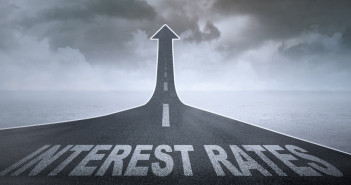The Fed is trapped in its own setting of expectations. They are almost certainly going to raise the interest rate once again, the third time in six months. Recent data does not really justify further tightening, so Yellen and co. could counter the hike with a dovish tone. How can they do it without losing their credibility?
Here is a preview for the important rate decision on June 14th at 18:00 GMT. The press conference is at 18:30.
1 – Are they really raising rates?
We argued against the Fed raising rates, especially after the poor Non-Farm Payrolls. If the Fed is truly data-dependent, they cannot ignore the slowdown.
The Fed has two mandates: employment and inflation. Job gains are slowing down with 138K in the latest report. In theory, that could be a sign of the economy nearing full employment. It is just harder to hire. However, wage growth is stuck at 2.5%, and that is an ominous sign. There still is a lot slack.
In addition, inflation is not going anywhere fast. The Fed’s favourite measure dropped from a peak of 1.8% to 1.5% in April. The 2% goal looks elusive. Core inflation is also sliding: 1.9% in the latest report.
Maybe growth has yet to translate into inflation? Not really. The US economy grew by only 1.2% annualised in Q1 2017. In 2016 it grew by 1.6%.
So, we and also others doubt the hike is justified, but the Fed guided us to believe they will raise rates. Bond markets point to a 99% chance of a hike. Markets don’t like surprises and the Fed doesn’t like to surprise markets.
So, a hike is fully priced in. If we don’t get a hike, it will be a total shock and the USD will crash.
But let’s assume a hike is coming
2 – Dot plot – dovishness in here?
The Fed could respond to the gloomier reality with a downgrade of the path for future rate hikes. It could raise rates now but tell us that it will pause from now on.
Current projections show three hikes in 2017. Assuming the June hike, this means one more hike left. They could remove the projection for further hikes this year to acknowledge reality. This will send the dollar down.
If they leave the dot-plot unchanged, the dollar might respond to any shifts they do for 2018 and 2019.
And if Yellen and co. surprise by upgrading the projections to four hikes in 2017, the dollar will rise.
3 – Statement: what about inflation?
While this is a more important meeting that consists of a potential hike and the dot-plot, the regular statement is of importance as well. A lot depends on how they see inflation.
If they shrug off lower inflation (and also lower growth) as transitory, the dollar could rise. This is what they did in the past: ignoring weakness in Q1 or the fall in oil prices. Can they really ignore the fall in core inflation? This will be harder and they could express more worries about it.
We will also learn if Neel Kashkari dissented once again and did not want a hike. This could USD negative as well.
4 – Yellen’s comments, especially on wages
Fed Chair Janet Yellen meets the press after we will have had 30 minutes to digest the statement and the dot-plot. She will get the opportunity to explain the decision and to set a tone. If she is optimistic about the economy, the dollar has room to the upside. Using words such as “transitory†about weaknesses and “confident†about the future should help.
Words like “caution†or “need more evidence†and “uncertainty†before moving forward would express doubts and a more dovish path moving forward, hurting the dollar.
Her comments about wages are of higher significance. Reporters could ask her about full employment and she could say there is still a lot of slack, as evident in wages. Any hope for higher wages could help the greenback while uncertainty about this sensitive topic could hurt it.
5 – Quantitative Tightening  – QT
The Fed’s balance sheet is bloated: $4.5 trillion dollars. The central bank reinvests the proceeds: buys new bonds for each bond that matures. They have already begun discussions about reducing the balance sheet and this could begin relatively soon.
However, pulling money out of the market could cause a “tantrum†similar to the “taper tantrum†of 2013. The message will probably be “going as gradual as possible“, at an extremely slow pace.
Markets are still fully focused on the timing of the next rate rises. Unless Yellen details a radical plan to slash the balance sheet, any mention of this either in the statement or in the press conference will probably have a limited effect and will not boost the dollar too much.
What is priced in and when will markets react
The Fed decision will be felt beyond the initial announcement. We will see a reaction when Tokyo opens at midnight GMT, and then another response in Europe from 7:00.
If the message is well-balanced, the market’s narrative of what happened could take some time to develop. Analysts will weigh in on every word in the statement and coming out from Yellen’s mouth.
A dovish hike is mostly priced in, with the next move awaiting us probably in December. However, they could push back the next hike until 2018.
What do you think?



